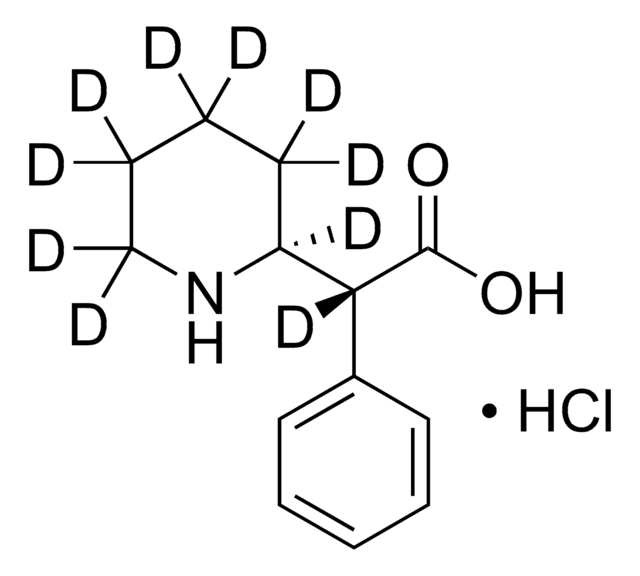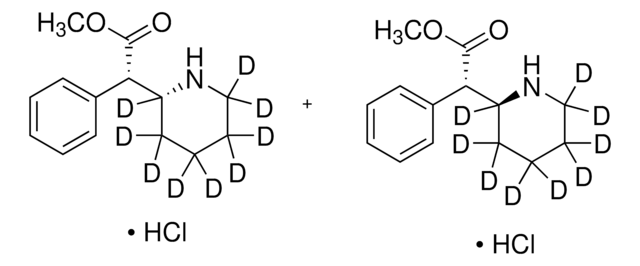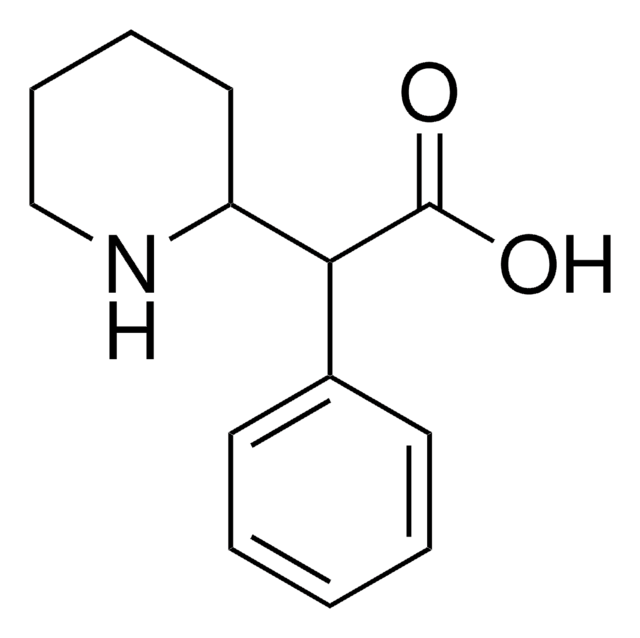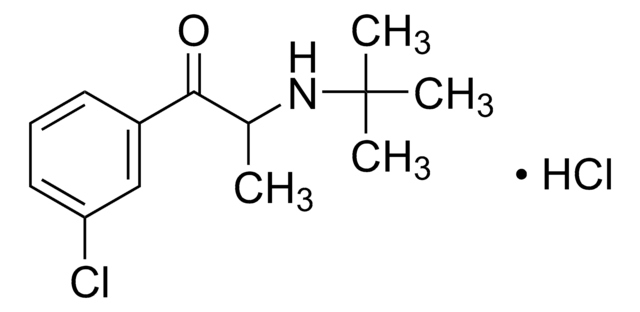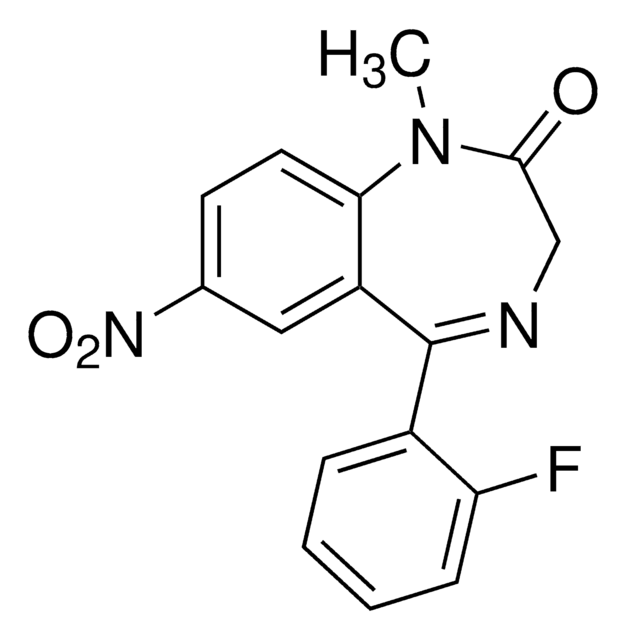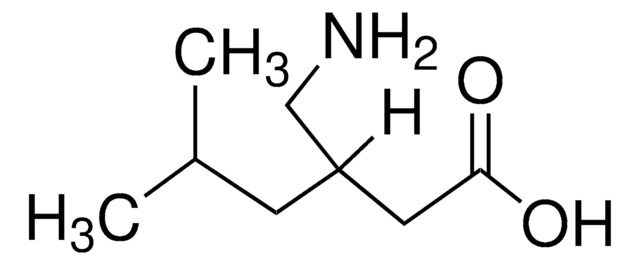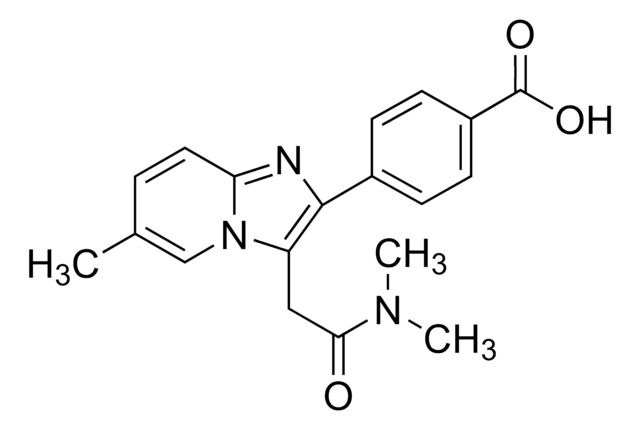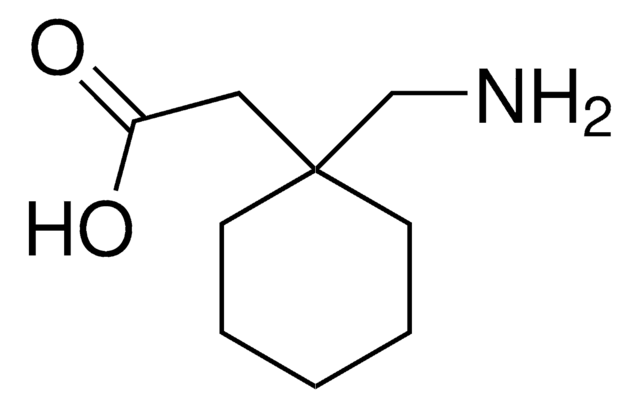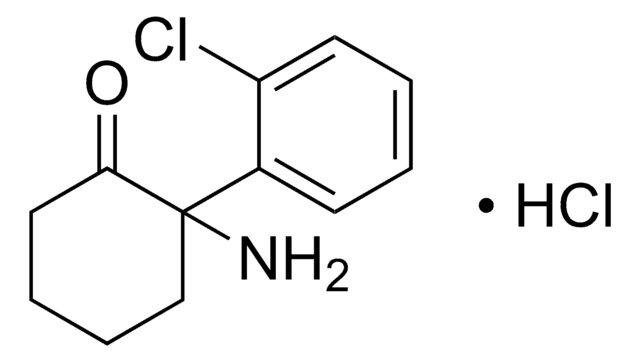R-011
Ritalinic acid hydrochloride solution
1.0 mg/mL in methanol (as free base), ampule of 1 mL, certified reference material, Cerilliant®
About This Item
Productos recomendados
grade
certified reference material
form
liquid
feature
Snap-N-Spike®/Snap-N-Shoot®
packaging
ampule of 1 mL
manufacturer/tradename
Cerilliant®
concentration
1.0 mg/mL in methanol (as free base)
technique(s)
gas chromatography (GC): suitable
liquid chromatography (LC): suitable
application(s)
forensics and toxicology
format
single component solution
storage temp.
−20°C
SMILES string
Cl.OC(=O)C(C1CCCCN1)c2ccccc2
InChI
1S/C13H17NO2.ClH/c15-13(16)12(10-6-2-1-3-7-10)11-8-4-5-9-14-11;/h1-3,6-7,11-12,14H,4-5,8-9H2,(H,15,16);1H
InChI key
SCUMDQFFZZGUQY-UHFFFAOYSA-N
General description
Application
- Genotoxicity research in non-human primates: Ritalinic acid hydrochloride, a primary metabolite of methylphenidate, is used in genetic toxicology studies to evaluate potential genotoxic effects, aiding in the assessment of safety profiles for neuropharmacological treatments (Morris et al., 2009).
- Pharmacokinetics and mutagenicity studies: Ritalinic acid hydrochloride is used in dose-range and mutagenicity research. It helps in studying the pharmacokinetics and toxicological impact of methylphenidate, offering important insights into its safety and effectiveness in therapeutic applications (Manjanatha et al., 2008).
- Bioequivalence and food effect studies: In clinical pharmacology, ritalinic acid hydrochloride is instrumental in conducting bioequivalence studies of dexmethylphenidate, examining the influence of food on drug absorption and metabolism, crucial for optimizing drug administration protocols (Teo et al., 2004).
- Childhood pharmacotherapy: Research using ritalinic acid hydrochloride explores the effects of methylphenidate when administered with or without food, highlighting its impact on the plasma concentration of the drug and its acid metabolite, informing pediatric dosing guidelines (Chan et al., 1983).
- Hyperkinetic disorders treatment studies: Ritalinic acid hydrochloride supports pharmacokinetic studies in children with hyperkinetic disorders, aiding in understanding how methylphenidate behaves within the body to improve therapeutic strategies (Hungund et al., 1979).
Legal Information
related product
signalword
Danger
Hazard Classifications
Acute Tox. 3 Dermal - Acute Tox. 3 Inhalation - Acute Tox. 3 Oral - Flam. Liq. 2 - STOT SE 1
target_organs
Eyes,Central nervous system
Storage Class
3 - Flammable liquids
wgk_germany
WGK 2
flash_point_f
49.5 °F - closed cup
flash_point_c
9.7 °C - closed cup
Certificados de análisis (COA)
Busque Certificados de análisis (COA) introduciendo el número de lote del producto. Los números de lote se encuentran en la etiqueta del producto después de las palabras «Lot» o «Batch»
¿Ya tiene este producto?
Encuentre la documentación para los productos que ha comprado recientemente en la Biblioteca de documentos.
Los clientes también vieron
Artículos
As a major metabolite of methylphenidate (1, Ritalin), ±-threo-Ritalinic acid (2) is of clinical relevance.
Nuestro equipo de científicos tiene experiencia en todas las áreas de investigación: Ciencias de la vida, Ciencia de los materiales, Síntesis química, Cromatografía, Analítica y muchas otras.
Póngase en contacto con el Servicio técnico